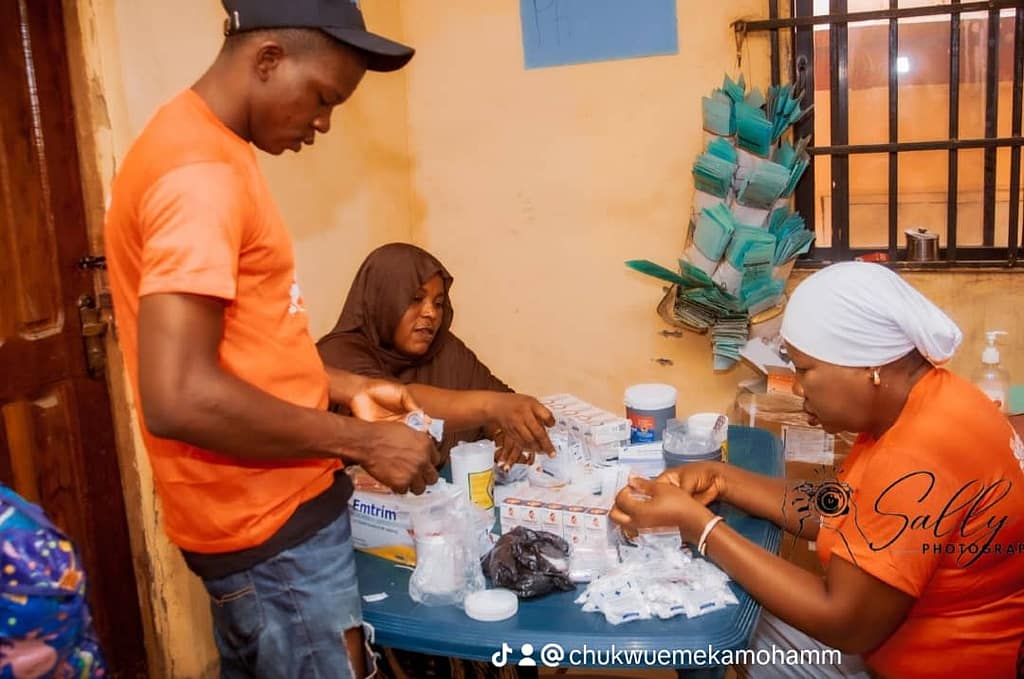Introduction:
Hypertension, commonly known as high blood pressure, is a significant public health concern affecting individuals worldwide. Slum communities like Kabawa community in Lokoja, is characterized by poor living conditions and limited access to healthcare, are particularly vulnerable to hypertension. Implementing practical and accessible prevention and treatment measures is crucial in addressing this issue as we at MOHAB Peoples Care Foundation have done in Kabawa community through a one-day free medical outreach in commemoration of World Hypertension Day on 17th May, 2023. This article provides a step-by-step guide for preventing hypertension and outlines routine treatment measures tailored for slum communities.
I. Prevention of Hypertension in Slum Communities:
Preventing hypertension involves adopting healthy lifestyle choices and addressing risk factors. The following steps can significantly contribute to hypertension prevention in slum communities:
Health Education and Awareness:
a. For example in Kabawa area, prior to 17th of May, 2023, the Mohab foundation team conducted community health campaigns to raise awareness about hypertension, its risk factors, and complications.
b. We utilize local community leaders and volunteers to spread information about healthy lifestyle practices and the importance of regular blood pressure check-ups.
Encouraging Physical Activity:
a. Promote physical activity through community-based programs such as group exercises, sports activities, and walking clubs.
b. Create safe spaces for physical activity within the slum community, such as designated relaxation areas.
Healthy Diet Promotion:
a. during our free medical outreach program, the MOHAB foundation team educates community members about a balanced diet, emphasizing the importance of reducing salt and saturated fat intake.
b. We encourage the consumption of fresh fruits, vegetables, whole grains, and lean proteins.
c. it is also important to establish community gardens or support local initiatives for affordable access to nutritious food within slum communities.
Reducing Substance Abuse:
a. MOHAB Team equally educate the program participants within Kabawa community about the adverse effects of tobacco and alcohol on blood pressure.
b. We collaborate with local organizations (Primary Health Care Centre available in Kabawa) to provide counseling and support for smoking cessation and alcohol abuse.
Stress Management:
a. Offer stress reduction workshops, relaxation techniques, and meditation sessions within the community.
b. Advocate for community spaces dedicated to recreational activities that promote stress relief.
II. Routine Treatment Measures for Hypertension in Slum Communities:
Access to routine treatment for hypertension is vital in slum communities where healthcare resources may be limited. The following steps outline practical measures for managing hypertension:
Establishing Community Health Centers:
a. Collaborate with local healthcare providers, NGOs, or government agencies to establish more community health centers within or near the slum areas.
b. Ensure these centers are adequately staffed with healthcare professionals trained in hypertension management.
Regular Blood Pressure Monitoring:
a. Organize regular blood pressure screening camps within the community to identify individuals with hypertension.
b. Train community health workers or volunteers to measure blood pressure accurately and provide basic counseling on hypertension management.

Medication Accessibility:
a. Advocate for affordable or subsidized medication programs for hypertension within the slum communities.
b. Collaborate with pharmaceutical companies, government agencies, or NGOs to provide free or low-cost antihypertensive medications.

Health Records and Follow-up:
a. Develop a system for maintaining electronic or paper-based health records of individuals with hypertension within the community health centers.
b. Establish a follow-up mechanism to ensure individuals receive regular check-ups and medication refills.
Lifestyle Modification Support:
a. Conduct regular support group meetings to provide guidance and motivation for lifestyle modifications.
b. Encourage individuals to form peer support networks to share experiences and provide ongoing encouragement.
Collaboration with Local Stakeholders:
a. Establish partnerships with local businesses, community organizations, and religious institutions to enhance hypertension awareness and support initiatives.
b. Collaborate with local pharmacies to ensure the availability of affordable antihypertensive medications.
Conclusion:
Prevention and routine treatment measures for hypertension in slum communities require a multi-faceted approach involving education, lifestyle modifications, accessible healthcare services, and community engagement. By implementing these practical step-by-step measures, slum communities can effectively address hypertension and improve the overall health and well-being of their residents. It is essential to sustain efforts, raise awareness, and advocate for adequate healthcare resources to combat hypertension in these vulnerable populations.

